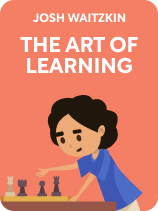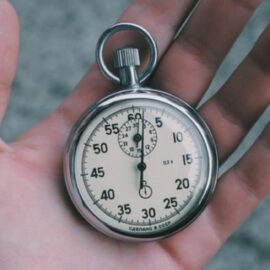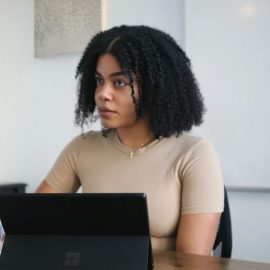

This article is an excerpt from the Shortform book guide to "The Art of Learning" by Josh Waitzkin. Shortform has the world's best summaries and analyses of books you should be reading.
Like this article? Sign up for a free trial here .
How do you tap into your competitive spirit? More importantly, how do you stay on top of your competitive game when circumstances aren’t in your favor?
In competitive enterprises, you’ll meet plenty of adversity on your path, so it’s crucial to learn how to use the negatives as opportunities for growth. To not let your competitive spirit wane in the face of adversity, stay on top of your game by always seeking growth opportunities, even in negative situations.
Here’s how to stay on top of your game and maintain a competitive mindset no matter what.
When Injured, Do Internal Work
In most competitive sports, you run the risk of injuring yourself. Keeping your competitive mindset means treating major setbacks, such as injuries, as opportunities to train the subtle, psychological aspects of your skill.
(Shortform note: While some would see it as a setback, many athletes took the 2020-21 COVID-19 quarantines as an opportunity to train with greater focus. In these “quarantine camps,” athletes reported receiving more sport-specific training, emotional health support, better recovery facilities, and greater massage and therapy usage. This supports Waitzkin’s view that setbacks, even those as major as a global pandemic, offer opportunities to grow in new ways.)
A broken bone or overtaxed muscle can’t stop you if you want to become the best. To live a life of excellence, there’s no room for slacking off. Waitzkin says that if he gave himself time off every time he experienced pain, he’d never get off the couch.
After breaking his hand in competition, Waitzkin worked on the soft, subtle aspects of tai chi. With one arm in a cast, he persisted at practice, training his ability to read his opponent’s tells, stay present mid-fight, and time his moves. In spite of the cast, he learned to unbalance his opponents with just one arm, demonstrating that even serious injuries can have huge upsides.
(Shortform note: Waitzkin is an extremely dedicated competitor, and it may not be a great idea to push as far as he did. Typically, pain is a signal from your body that something’s wrong, and it’s important to allow your body to properly heal. If you continue to train with a broken bone, as Waitzkin did, you risk developing chronic pain from a poorly healed injury. He says that if he rested whenever he was in pain, he’d never be training—but most of us don’t need to be world champions to gain many of the benefits of fitness and competitive fulfillment.)
Though you can’t directly train the injured part of your body, time spent healing should still be spent training. Every skill has a technical side and a psychological side. Instead of doing technical practice, do mental practice. For example, instead of practicing your free throw, you could work on remaining calm under pressure.
You can also use visualization to maintain immobilized muscles while you’re injured. Waitzkin details how he would work out the healthy side of his body, then “energize” the muscles stuck in a cast by performing the same workout with visualization. When the cast came off, his muscles had hardly lost mass.
(Shortform note: Using one-sided training to maintain your strength while injured is called “cross-education,” and isn’t as implausible as it sounds. In short, one-sided training can stimulate muscle and nerve growth in the complementary muscle group. So if your left leg is injured, working out the right one may help the injured side to recover, or at least maintain fitness. Further, visualization can help you train while injured: It stimulates the nerve cells that correspond to what you visualize, so you can activate a muscle even while it’s immobilized.)
Actively Seek Out Challenges
Success comes from failure, and you have to be willing to err in order to grow. Make an effort to take on challenges that push your limits, since this gives you more opportunities to learn. For example, you might run a 5K race and try to keep up with a runner who you know is faster.
Waitzkin argues that you’ll need to unlearn many of your old habits when starting a new skill. For example, a chess player learning the strategy board game Go needs to let go of all their habits of strategy and tactics, since Go is very different from chess.
(Shortform note: The concept of “beginner’s mind” comes from Zen Buddhism, and refers to the idea that the more you know (or think you know) about something, the more closed-off you become to knowledge. In contrast to the expert’s mind, which is relatively fixed, the beginner’s mind embraces failure. It keeps you open, humble, and willing to set aside your ego. This helps you grow more effectively—but the paradox is that you’ll need to avoid becoming fixed as you learn. Work to continually foster a beginner’s mind by challenging your confirmation bias, conversing with people who hold different beliefs than you, and remembering that intelligence is malleable.)
Waitzkin says you need to set aside your ego because remaining attached to old habits hinders learning. By letting go of the need to be right, you open the gates to real learning. For example, a sprinter who refuses to adjust his form hinders his own learning; if he admits the mistake, he can learn from it.
(Shortform note: Sports psychologist Carrie Jackson explains that excessive ego, or arrogance, can prevent you from achieving high-level athletic success. At the same time, you need some ego, since believing in yourself gives you the confidence to succeed. The key is to balance it: No ego, as Waitzkin advocates, is good for training. But a healthy, self-assured confidence is better for competition, since it’s not helpful to focus on open-mindedness in the middle of a crucial match.)
Waitzkin recommends actively seeking opportunities to fail. His tai chi master, William C. C. Chen, calls this “investing in loss.” If you go out of your way to get pushed past your limits, you’ll grow more quickly out of necessity.
He also argues that the faster you can learn from your mistakes, the faster you’ll grow. It’s not realistic to notice every mistake the first time you make it, so look for patterns of errors (as we explained in the previous section) and learn from them. If you do this, Waitzkin says, you’ll be able to push past any challenge.
(Shortform note: This approach uses the principle that “necessity is the mother of invention.” In other words, throwing yourself into deep water forces you to sink or swim. Research has found that people in resource-scarce environments demonstrate a strong ability to innovate. The study discusses jugaad, a Hindi concept that refers to finding cheap, intelligent solutions through trial and error, especially when resources are scarce. While jugaad deals with the external world, Waitzkin’s all-in approach is a bit like internal jugaad: Put yourself in a situation that you can’t handle with your current internal resources, and you’ll find a way to succeed through trial and error.)

———End of Preview———
Like what you just read? Read the rest of the world's best book summary and analysis of Josh Waitzkin's "The Art of Learning" at Shortform .
Here's what you'll find in our full The Art of Learning summary :
- Life advice from chess prodigy and tai chi World Champion Josh Waitzkin
- Detailed looks at the psychological and technical sides of skill-building
- How to build any skill from the bottom-up






